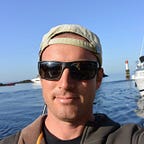Where to Go from Here?
A month and a bit ago, I slumped in my chair in the auditorium for the Zayed Future Energy Prize. It was a slump of relief but also dread, knowing that the project would help to define what our school would be doing for the coming year.
Having a huge amount of financial resources to back up a project is a luxury that I have never ever had… usually we make due with the minimalist approach. We find ways to reuse pieces that we have lying around, look for connections within our community that we can leverage, and at the very worst dip into the budget of the enterprise department. We have got by and learned a ton in the process, but now we turn over a new leaf: one made of gold!
While in Abu Dhabi, we got to take a trip into the desert, and that for me despite all the other amazing experiences, was one of the more profound moments. A desert from afar looks inhospitable to life, it is dry and lacking in soil or organic material. Get closer, though, and suddenly you see that in every handful of sand you will find a few pieces of organic material from the hardy plants that have found ways to make use of the tiny rainfall and substrate. I could connect to this, and saw a nice allegory in what we are soon to embark on.
The desert ecosystem functions well. It is in a fine balance that while vulnerable, is also incredibly hardy. Running LEAP in the past has felt this way. We make due with what we have, and find ways to make our projects function. With the winning of the Zayed Prize, our LEAP ecosystem will be more like a rain forest: the resources to carry out the project will be far greater, but with this we can expect far more complexity.
The student who joined me in accepting the award in Abu Dhabi, Mikel, and I have put in a fair amount of time up till now thinking about systems that will help to manage the complexity of this project. Starting next week, we will have a handful of full time High School students working as our team who is to get the Zayed Future Energy Prize (ZFEP) off the ground at Green School. In the same way that the award made me dually elated and anxious, so does the start of the next iteration of LEAP. With 20% of our school week dedicated to the ZFEP, we expect to get much done.
To start with, we will need to address the very real danger our original proposal may have for the school. The disassembly of batteries is a dangerous and precise procedure, and before we even touch a battery we will need to make sure we have the safety equipment to limit our risk. The Samsung incident highlighted the danger that these energy dense batteries may pose, and the more we look into it the more we fear burns, explosions, or toxic spills.
While experimenting with these batteries, we will also look beyond the upcycled battery bank. We learned in the past couple weeks that eWaste in Bali is a major issue, but not only because it is not disposed of correctly: those who collect it have nowhere to send it as well. Should we, as a school that prides itself on providing students a natural environment to learn in, be bringing in large amounts of waste without a definitive way to move it forward in the process?
Not all is scary though. The school is in the middle of talks to rebuild our gymnasium over the summer, and coincidentally our ZFEP proposal asks for our gymnasium roof to be converted to a solar array. At this point, our students will be directly involved in the consultation process, looking at how we can best create a gym that we can leverage as a space to produce more energy and bring our school closer to becoming grid independent.
We also have started to explore a diverse number of options both for the energy generation and the energy storage side of things. In energy storage, we are exploring pumped storage, flow batteries, flywheels, or even just going more conventional with some Lithium Ion fellows. On the generation side, we are going to look at piezoelectric tiles, human kinetic energy generators, and of course a bunch of PV options. Needless to say, we are learning so much about these elements, and can’t wait to get together to really dig deeper.
